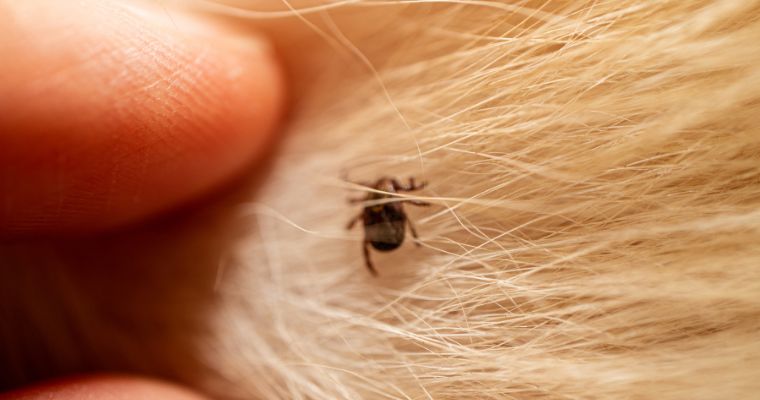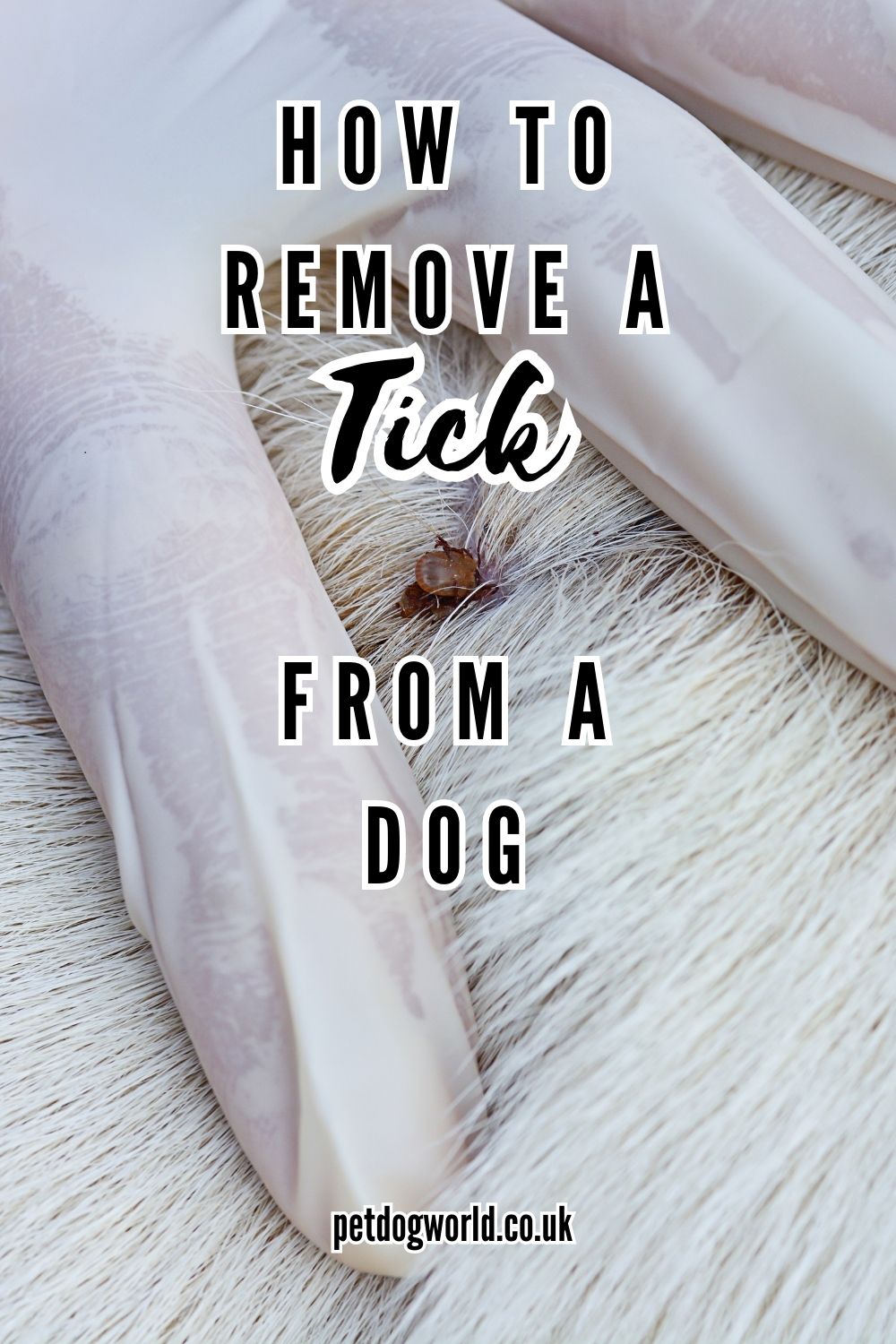A tick bite isn’t usually painful, it can itch and there may be swelling, however, tick bites can also be a carrier for diseases such as Lyme Disease if the tick carries that bacteria. This post will show you how to remove a tick from a dog.

What Does a Tick Look Like on a Dog?
Ticks are small and can vary in colour and size. They may look like tiny spiders with a small, round body and eight legs. The size of the tick can depend on its species, how long it’s been feeding, and its life stage. Unfed ticks are typically 1 to 5 millimetres long, comparable to the size of a sesame seed or a poppy seed.
How to Remove a Tick
Firstly, try to remain calm when removing the tick. Dogs are highly intuitive creatures and will pick up on their owners’ anxiety. The calmer you are, the more likely your dog will remain calm throughout the process.
You’ll need a pair of fine-tipped tweezers or a specially designed tick removal tool, gloves to protect your hands, rubbing alcohol, a small container with a lid, and a mild antiseptic or dog-friendly wound cleaner. You might also want to have a few dog treats nearby as a reward.
Before you start, put on the gloves to protect yourself. The tick’s fluids can carry diseases which can affect humans as well as dogs. Now, locate the tick. They can latch onto any part of your dog’s body, but they are often found around the neck, ears, and paws.
Once you’ve located the tick, gently part your dog’s fur for a better view. Be cautious not to squeeze or crush the tick as this can cause it to release harmful bacteria. Hold the tweezers close to the skin to avoid tearing the tick and pull upward with steady, even pressure. Do not twist or jerk as you could leave parts of the tick’s mouth in the skin.
If you live in an area where there are tick-borne diseases, you may want your vet to test it. In this case, put the tick in a small container ready to take with you.
Next, cleanse the bitten area with an antiseptic or wound cleaner. Keep an eye on the bite over the next few days for signs of infection such as redness, swelling, or discomfort.
Once you’re done, don’t forget to reward your dog with lots of love and maybe a treat or two. The whole ordeal can be stressful for your dog, so it’s important to help them feel safe and secure afterwards.
Clean Up
Clean your tweezers with rubbing alcohol and wash your hands thoroughly after the process. If at any point you feel uncomfortable or unable to safely remove the tick, do not hesitate to contact your vet. It’s better to seek professional help than risk hurting your pet or leaving part of the tick in your dog’s skin.
Prevent Ticks on Dogs
After your dog has encountered a tick, it might be a good time to look at preventative measures. There are many products available, from tick collars and chewables to monthly topical treatments, that can provide a barrier between ticks and your dog.
Remember, the best protection against ticks is prevention. Regularly check your dog for ticks, especially after walks in the countryside. Ticks can attach to your dog quickly, so prompt removal is essential to prevent disease transmission.
Check Your Skin
Lastly, don’t forget to regularly check your skin too. Ticks don’t discriminate, and you can easily pick one up while you’re out walking your dog.
By familiarizing yourself with these steps, you’ll be well-equipped to deal with tick bites. It might seem daunting at first, but with calm and careful handling, they can be removed easily.


